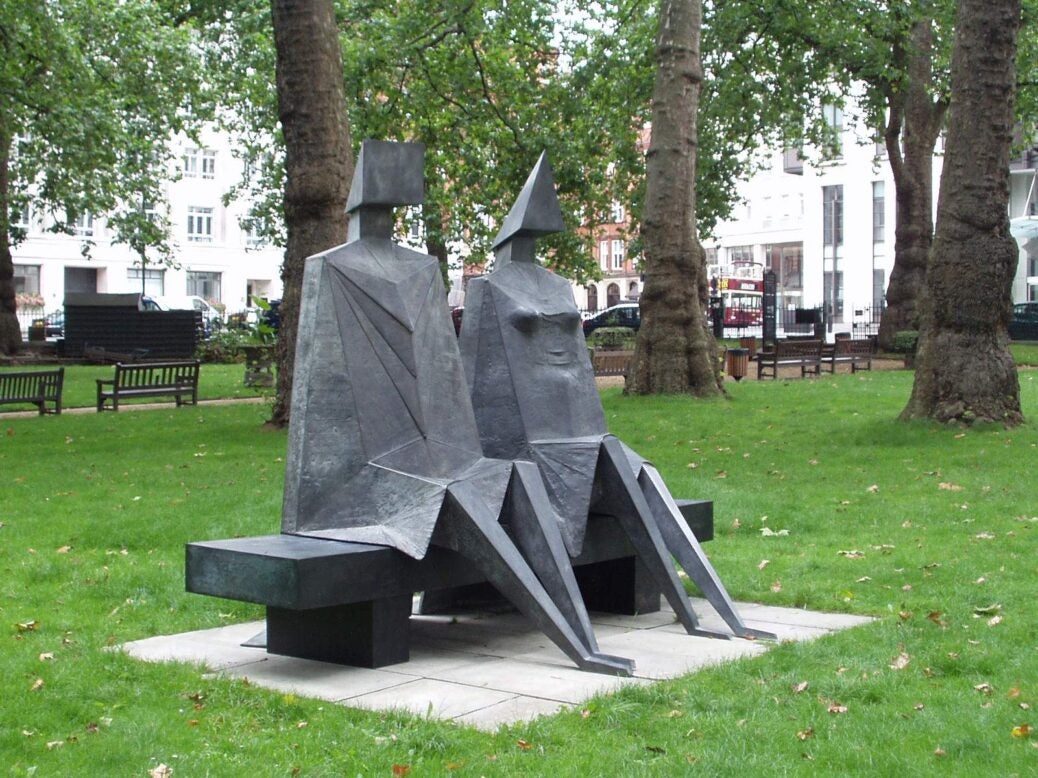
A dispute over the estate of the late artist and sculptor provides an important message for those passing on valuable artwork, write Camilla Wallace and Michael Gardner
Lynn Chadwick is widely recognised as one of the great sculptors of our age. His sculpture Couple on a seat was sold for £1.4 million in 1996 and his works are exhibited in modern art museums all over the world. He died in 2003 leaving a widow (his third wife) and four children from his three marriages. His career started around 1946 when he produced his works of art as a sole trader but by 1973 he had formed a company, Lypiatt Studio Limited, and his remaining works (until retirement in 1996) were produced through the company.
Chadwick left a Will leaving two shares in Lypiatt Studio Limited to his widow giving her a controlling 52 per cent share in the company. His children were left with the remaining 48 per cent. One of the children, Sophie, contested ownership of the physical property and IP rights in Chadwick’s works, claiming that these belonged to the estate rather than the company.
The issue was whether Chadwick had transferred his existing works (the physical property as well as the IP rights) to the company when he set it up in 1973 and also whether all works produced thereafter truly belonged to the company rather than to Chadwick personally. If the company was not the true beneficial owner of any of the works, those works would pass under Chadwick’s Will to his children; if the company was the owner, the widow, as the controlling shareholder, would effectively own the majority of the economic value.
Works of art such as paintings, sculptures, photographs and indeed many other forms of creative work may attract IP rights protection as copyright works or in some cases as protected designs. But in most cases, the first legal owner of such rights will be the artist or author who created them. If that person was an employee of a company at the time the works were created and the creations were done in the course of that employment, then the company would be the legal and beneficial owner. But in the absence of a clear ’employer-employee’ relationship or a specific contract transferring the IP rights, the situation can become uncertain and difficult to clarify. There was no such employment contract in the Chadwick case and no written evidence of the transfer of any of the physical property or IP rights in the works to the company.
The High Court issued its judgment on 31 July 2018 and ruled in favour of the company. Despite the lack of documentary evidence, there was sufficient other evidence to demonstrate that Chadwick intended for his existing works to be transferred to the company, and for the company to own all future works, including IP rights, as payslips and other evidence demonstrated that Chadwick was an employee of the company. Also persuasive was the inheritance tax liability which would have resulted if Chadwick had owned the works personally. This would have necessitated the sale of a substantial proportion of the works, which the Court noted cannot have been Chadwick’s intention.
What lessons can be learnt from this case for those with valuable art works and/or IP rights? Firstly, leave a paper trail in respect of ownership. Provide your executors with evidence of who owns those assets; be it company or personal ownership.
Secondly, leave a letter of wishes. A letter of wishes is a non-binding side letter to your Will and is particularly important where there are children and spouses with competing interests. If Chadwick had left one explaining that he wanted his widow to have the main benefit of his physical works and IP rights during her lifetime, and why, a court battle could have been avoided.
Lastly, if you have shares in a family company, have a succession plan for the company. A ‘company will’ or letter of wishes indicating how you would like the company to function can help. If those receiving shares under your Will are not likely to get on with the existing shareholders, or each other, this needs to be considered ahead of time. Option agreements could be used to allow shareholders to buy each other out. A trust could also be considered to hold some of the shares.
Although the company’s ownership of Chadwick’s works was eventually proven, the key message is not to leave it to the courts to decide after your death. Take control during your lifetime and put the necessary legal mechanisms in place to avoid or calm potential conflict.

Camilla Wallace is partner and head of the Private Client Group and Michael Gardner is partner and head of IP and Commercial at Wedlake Bell LLP
Related
Why the ‘superinjunction’ failed in the case of the secret Thai wife
A turning point in digital immortality
What Fortnite taught me about the laws of gifting






